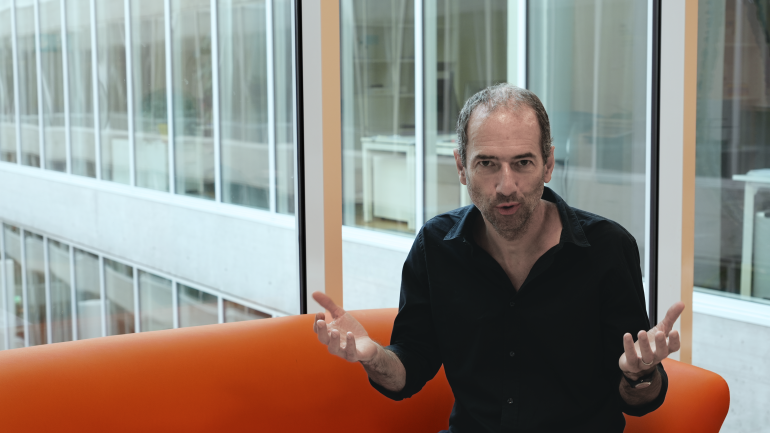
Daniel Oesch, sociologist at the University of Lausanne. KA / Centre LIVES
How can we assess the hierarchical position of a profession in society? The answer provided by Daniel Oesch and his colleagues, published in the European Sociological Review, can be summed up in three letters: OEP, which stands for "Occupational Earning Potential". This scale abandons complicated calculations in favor of a simple approach that compares the median salary for each occupation with that of the population as a whole.
What prompted you to develop the OEP scale?
Our goal is to better understand material inequalities. To understand, we first need to measure. In spring 2023, we welcomed Swedish researcher Roujman Shahbazian to LIVES, a specialist of Swedish registry data covering the entire population over several decades. He inspired us to develop a measure that would reveal the social hierarchy in these data: the OEP, a scale of occupational earning potential.
So the OEP is based on Swedish data?
Yes, but not exclusively. We developed the scale using large national databases representing five countries - Sweden, Germany, the United States, the United Kingdom, and Switzerland - covering at least the period from 1990 to 2020. These surveys and registries provide detailed descriptions of the occupations and incomes of large samples of the population, with more than 10,000 individuals per year per country. Working across several countries and decades enables us to verify the robustness of our results.
On what information is the OEP scale based?
On occupation. In many fields, researchers only have occupation data to assess the socioeconomic resources of individuals, whether they are voters, users, parents, or patients. However, occupations are not easily translated into a linear hierarchical measure. Although there are several scales that attempt to do so, they are complex and difficult to interpret.
How does the OEP convert occupations into a linear scale?
The OEP measures earning potential by expressing the median salary of different occupations relative to all employees. It's intuitive: if mechanics earn the median salary, their OEP is 50. If the median salary of janitors is higher than that of 30% of employees (and lower than that of 70%), their OEP is 30.
How is this new scale useful for research?
It has several interesting applications. First, it allows us to study intergenerational mobility: we often know the occupation of parents, but rarely their salaries. The OEP enables us to estimate the "social distance" traveled by children in relation to their parents: for example, the distance between a son who is an engineer (OEP 80) and his father who is a high school teacher (OEP 62), or between a daughter who is a lawyer (OEP 90) and her mother who is an accountant (OEP 59).
Next, for career aspirations: among adolescents, the OEP can be used to measure the financial attractiveness of the professions they aspire to. Finally, for careers, retrospective surveys track the professions people have had, but rarely their incomes. The OEP thus reveals upward, lateral, or downward career trajectories over the course of working life.
How can this scale be applied to public policy?
Let's take the canton of Geneva as an example. The parents' profession is recorded for all primary and secondary school students, but not their salaries or level of education. This information is used to estimate the socioeconomic profile of schools and allocate additional resources to the most disadvantaged institutions. However, this indicator is highly aggregated and imprecise. The OEP would provide a more accurate measurement, which would help target public resources where educational needs are greatest.
Interview by Kalina Anguelova
Daniel Oesch, Oliver Lipps, Roujman Shahbazian, Erik Bihagen, Katy Morris, Occupational earning potential: a new measure of social hierarchy in Europe and the US, European Sociological Review, 2025;, jcaf035, https://doi.org/10.1093/esr/jcaf035

